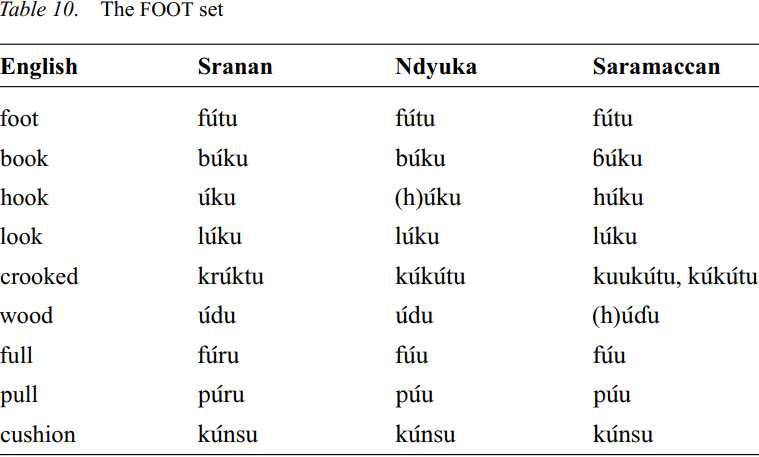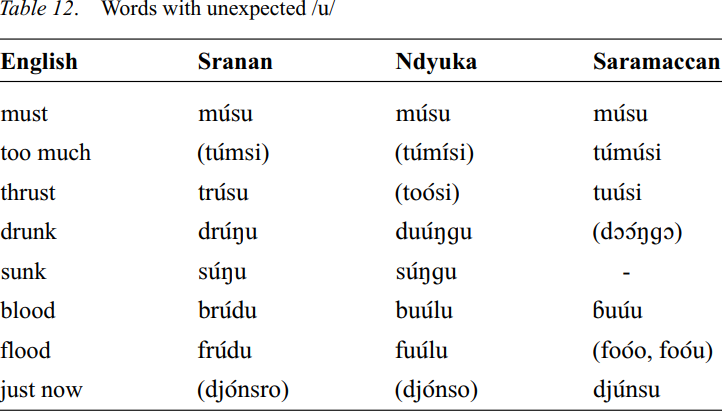


 Grammar
Grammar
 Tenses
Tenses
 Present
Present
 Past
Past
 Future
Future
 Parts Of Speech
Parts Of Speech
 Nouns
Nouns
 Verbs
Verbs
 Adverbs
Adverbs
 Adjectives
Adjectives
 Pronouns
Pronouns
 Pre Position
Pre Position
 Preposition by function
Preposition by function 
 Preposition by construction
Preposition by construction
 Conjunctions
Conjunctions
 Interjections
Interjections
 Grammar Rules
Grammar Rules
 Linguistics
Linguistics
 Semantics
Semantics
 Pragmatics
Pragmatics
 Reading Comprehension
Reading Comprehension|
Read More
Date: 2024-05-06
Date: 2024-04-24
Date: 2024-02-14
|
FOOT words with ME /ŭ/ preserved in EModE are represented in Suriname creoles by English words like bush, full, cushion, look, cook, wood, woman, etc. The normal realization of these u- words in the Suriname creoles is [u], a short high back rounded vowel. The split between the STRUT set and the FOOT set is at least partially phonologically conditioned in EModE, the latter class having a concentration of items with initial labials and, to a lesser extent, with postvocalic /k/.

The odd word that belongs to this incidence set in RP and AmE has the phoneme /o/ in the Suriname creoles. However, as we will shortly see, the exceptions in the other direction are more numerous.

The fact that a number of words where Standard English has /Λ/ have /u/ in the Suriname creoles has to be seen in connection with the fact that the change in Standard English (of London) is first evidenced around 1640 (Dobson 1957). It was just after this that Suriname was colonized. The following words have unexpected /u/.

Note that four of the words exhibit variation between /u/ and /o, ɔ/ among the languages, suggesting the presence of variable pronunciations in the seventeenth century.
|
|
|
|
دراسة يابانية لتقليل مخاطر أمراض المواليد منخفضي الوزن
|
|
|
|
|
|
|
اكتشاف أكبر مرجان في العالم قبالة سواحل جزر سليمان
|
|
|
|
|
|
|
اتحاد كليات الطب الملكية البريطانية يشيد بالمستوى العلمي لطلبة جامعة العميد وبيئتها التعليمية
|
|
|